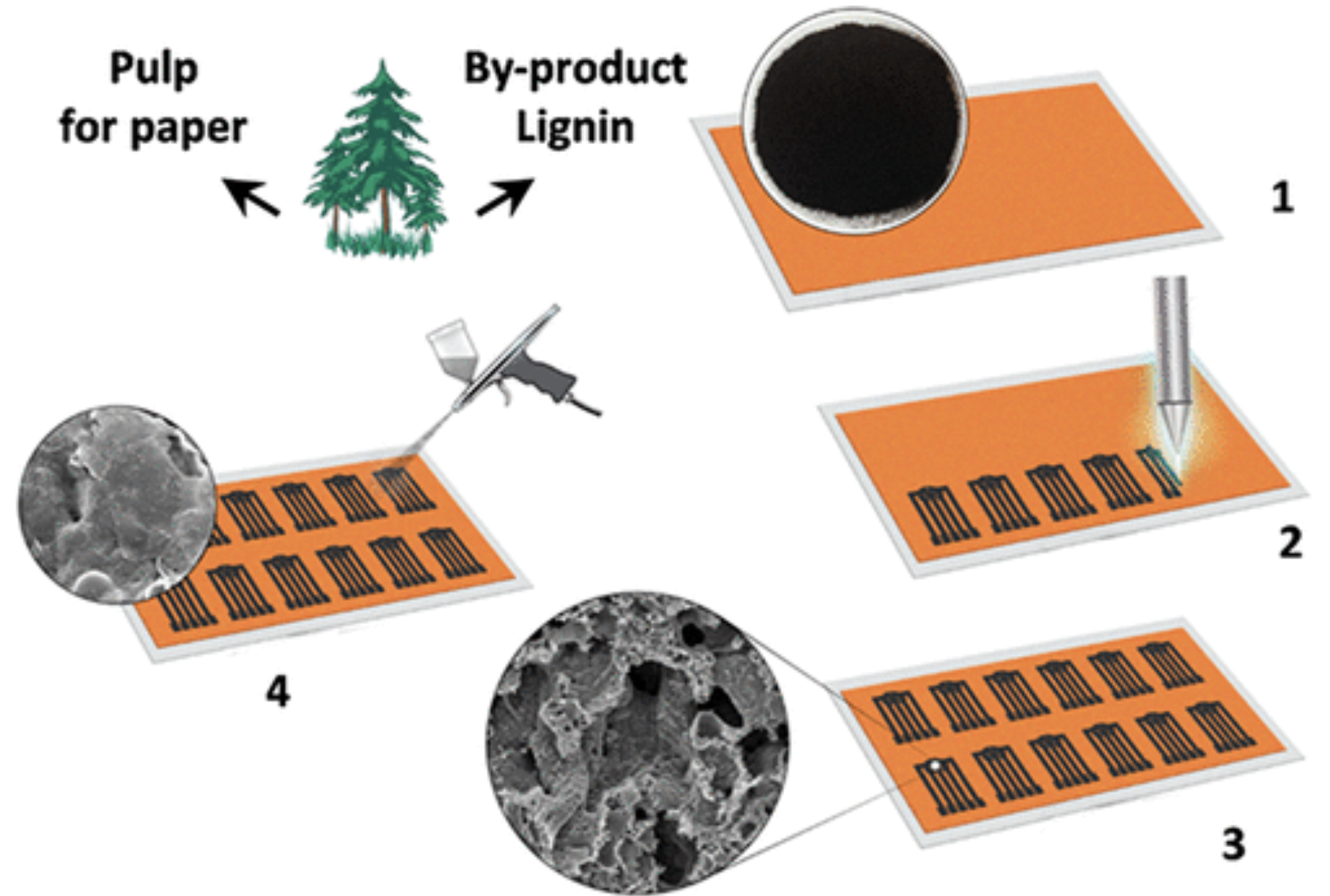Laser scribing of porous graphene electrodes on flexible substrates is of great interest for developing disposable electrochemical biosensors. In this work, we present a new patterning process for highly conductive nitrogen-doped graphene derived from a lignin-based precursor. A CO2 laser scribing process was performed under ambient conditions to produce the porous graphene electrodes from lignin. The obtained nitrogen-doped laser-scribed graphene (N-LSG) is binder-free, hierarchical, and conductive. The interconnected carbon network displayed enhanced electrochemical activity with improved heterogeneous electron transfer rate. These features can be attributed to the high conductivity of porous N-LSG (down to 2.8 Ω per square) and its enriched active edge-plane sites. Furthermore, the N-LSG electrodes were decorated with MXene/Prussian blue (Ti3C2Tx/PB) composite via a simple spray-coating process, designed for sensitive detection of analytes. The Ti3C2Tx/PB-modified N-LSG electrodes were functionalized with catalytic enzymes for detecting glucose, lactate, and alcohol. The enzyme/Ti3C2Tx/PB/N-LSG electrodes exhibited remarkably enhanced electrochemical activity toward the detection of these biomarkers with a performance on par with previously reported on-chip carbon-based biosensors. Therefore, these materials have high potential for applications in personalized healthcare.
